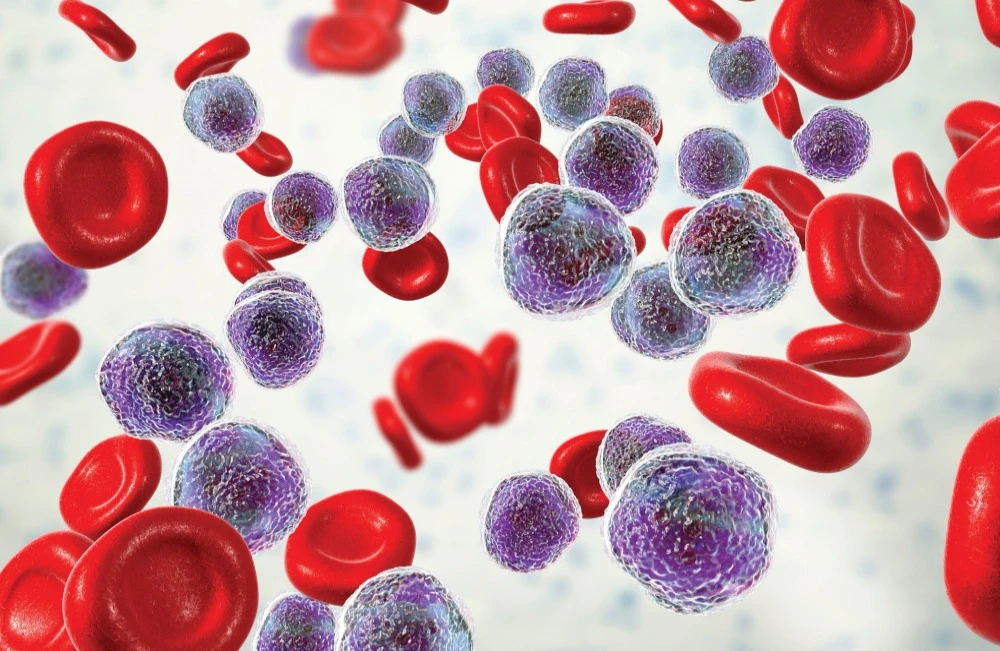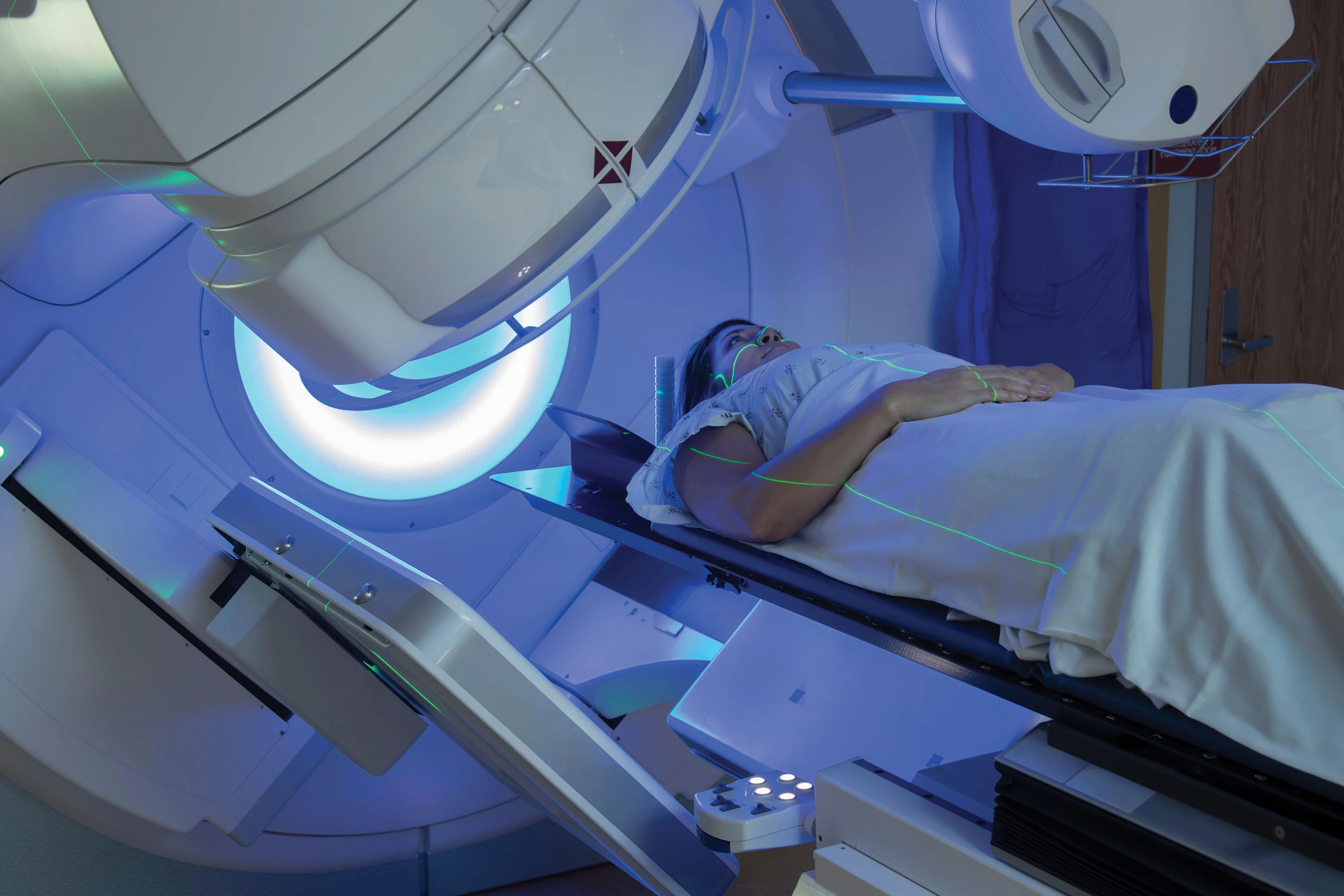Acute Lymphoblastic Leukaemia (ALL) in Adults

ALL, also known as Acute Lymphocytic Leukaemia, is a type of blood cancer that starts from the lymphocytic white blood cells produced in the bone marrow. There is an overproduction of abnormal white blood cells, which crowds the bone marrow and prevents the production of normal blood cells. ALL can affect both children and adults. In adults, this is known as Adult ALL.

There are no proven causes for Adult ALL, but certain risk factors have been identified:
- Age – Adult ALL occurs more frequently in people around 20 years old, followed by low incidence at mid age before the incidence increases again around 70 years of age.
- Gender – Adult ALL is slightly more common in men than in women.
- Congenital disorders – People with certain congenital disorders, such as Down Syndrome and Fanconi anaemia, may have a higher risk of developing Adult ALL.
- Viral infections – Infection with the human T-cell lymphoma/leukaemia virus-1 (HTLV-1) may result in a rare form of T-cell ALL. Infection with the Epstein-Barr virus (EBV) has been associated with a form of ALL as well, though mostly in Africa.
- Cancer treatment – Certain chemotherapy drugs or radiation therapy may increase the likelihood of developing ALL.
- Exposure to chemicals – Long-term exposure to industrial chemicals such as benzene, certain cleaning products, detergents and paint strippers, as well as tobacco smoke, may increase the likelihood of developing Adult ALL.
- Exposure to radiation – Exposure to high doses of radiation (for example, from an atomic bomb blast or nuclear reactor accident) increases the risk of developing Adult ALL.
Adult ALL may cause a variety of symptoms, which are mainly the result of having insufficient normal blood cells in the body. Common symptoms of Adult ALL are:
- Fatigue
- Fever
- Breathlessness
- Feeling weak
- Loss of appetite
- Weight loss
- Night sweats or excessive sweating
- Bleeding gums or nosebleeds
- Bruising easily
- Red or purple spots on the skin
- Bone or joint pain
- Feeling of fullness in the stomach or swollen stomach
- Painless lumps in the neck, underarm, stomach or groin
- Frequent infections
A physical examination, blood test and bone marrow biopsy will help in confirming a diagnosis of adult ALL.
In the physical examination, the doctor will check for general signs of health, and look for swelling in the liver, spleen and lymph nodes, unusual bleeding or bruising, and signs of infection.
The blood test, called a full blood count, involves a sample of blood being sent to the laboratory for investigation. The blood sample will be checked for the number of red blood cells,white blood cells and platelets. A high proportion of white blood cells may indicate Adult ALL.
A bone marrow biopsy involves taking a sample of bone marrow, usually from the hip bone. This is done under local anaesthetic and takes 15 – 20 minutes. The sample will also be sent for investigation by the laboratory, to be examined for cancerous cells.
Further tests may be done to determine the extent of the Adult ALL and to help determine the best treatment options. Some of these tests are lumbar puncture (or spinal tap), genetic testing, and imaging tests (X-rays and scans).
For most cancers, staging or determining the stage of cancer is helpful in deciding on treatment options. Adult ALL, however, starts in the bone marrow and traditional solid cancer staging is not applicable, Adult ALL is classified into few subtypes and risk stratified based on genetic profile and response to initial treatment.
The French-American-British (FAB) classification classifies Adult ALL into three subtypes, L1, L2 and L3, based on the appearance of the cancerous cells when examined under the microscope.
The newer World Health Organization (WHO) classification divides Adult ALL into several groups:
- Pre (precursor) B-cell ALL not otherwise specified – the most common type in adults
- Pre (precursor) B-ALL with recurrent genetic abnormality
- Pre (precursor) T-cell ALL – more common in young adults, and affects men more than women
There are two phases in treatment for Adult ALL: remission induction therapy and post-remission therapy. In remission induction therapy, the goal is to destroy all the cancer cells in the blood and bone marrow. In post-remission therapy, additional treatment is given to ensure any remaining but inactive cancer cells are destroyed, to prevent a relapse.
During both phases of therapy, an additional treatment called Central Nervous System (CNS) sanctuary prevention therapy is usually given. This consists of high-dose systemic chemotherapy, intrathecal chemotherapy (placed directly into the cerebrospinal fluid) and radiation therapy to the brain. CNS sanctuary therapy is given to destroy the cancer cells that may have ‘taken sanctuary’ in the CNS (the brain and spinal cord), where standard doses of chemotherapy may not have reached.
The standard treatments used in the two phases are chemotherapy, radiation therapy, chemotherapy with stem cell transplant and targeted therapy.

Chemotherapy
Chemotherapy uses drugs to destroy cancer cells or stop them from multiplying. Systemic chemotherapy refers to chemotherapy taken by mouth or injection, where the drugs reach cancer cells throughout the body via the bloodstream. Regional chemotherapy refers to chemotherapy that is placed directly into an organ or body cavity or into the cerebrospinal fluid, so that the drugs destroy mainly the cancer cells in that particular site.
Radiation Therapy
In radiation therapy, high-energy X-rays are used to destroy cancer cells in the body. Radiation therapy, in combination with chemotherapy is often used during the stem cells transplant as conditioning regime for transplant.
Chemotherapy with Stem Cell Transplant
Chemotherapy uses drugs to destroy cancer cells or stop them from multiplying. Systemic chemotherapy refers to chemotherapy taken by mouth or injection, where the drugs reach cancer cells throughout the body via the bloodstream. Regional chemotherapy refers to chemotherapy that is placed directly into an organ or body cavity or into the cerebrospinal fluid, so that the drugs destroy mainly the cancer cells in that particular site.
The doctor will assess the risks and benefits of a stem cell transplant based on the patient’s ALL genetic profile, response and medical history.
A new treatment called Chimeric Antigen Receptor (CAR) T-cells is a type of cell therapy which trains the patient’s T cell to recognise and attack the cancerous B cells. This therapy is promising and may change how stem cells transplant is being conducted in the future.
Targeted Therapy
In targeted therapy, drugs or other substances target specific cancer cells to destroy or block their growth, while leaving normal cells unharmed. Currently in adult ALL, there are new small molecules and monoclonal antibodies available in clinical practice which, have shown to improve the survival of patients.
Although there is no known way to prevent Adult ALL, the following may lower the risk of developing it:
- Do not smoke.
- Avoid or limit exposure to industrial chemicals such as benzene, such as by wearing protective gear.
- Avoid or limit exposure to radiation, such as by wearing protective gear.
- Avoid treating cancer with radiation and chemotherapy drugs linked to an increased risk of Adult ALL. However, some people may require these specific drugs for treatment.

CanHOPE is a non-profit cancer counselling and support service provided by Parkway Cancer Centre, Singapore. CanHOPE consists of an experienced, knowledgeable and caring support team with access to comprehensive information on a wide range of topics in education and guidelines in cancer treatment.
CanHOPE provides:
- Up-to-date cancer information for patients including ways to prevent cancer, symptoms, risks, screening tests, diagnosis, current treatments and research available.
- Referrals to cancer-related services, such as screening and investigational facilities, treatment centres and appropriate specialist consultation.
- Cancer counselling and advice on strategies to manage side effects of treatments, coping with cancer, diet and nutrition.
- Emotional and psychosocial support to people with cancer and those who care for them.
- Support group activities, focusing on knowledge, skills and supportive activities to educate and create awareness for patients and caregivers.
- Resources for rehabilitative and supportive services.
- Palliative care services to improve quality of life of patients with advanced cancer.
The CanHOPE team will journey with patients to provide support and personalised care, as they strive to share a little hope with every person encountered.
